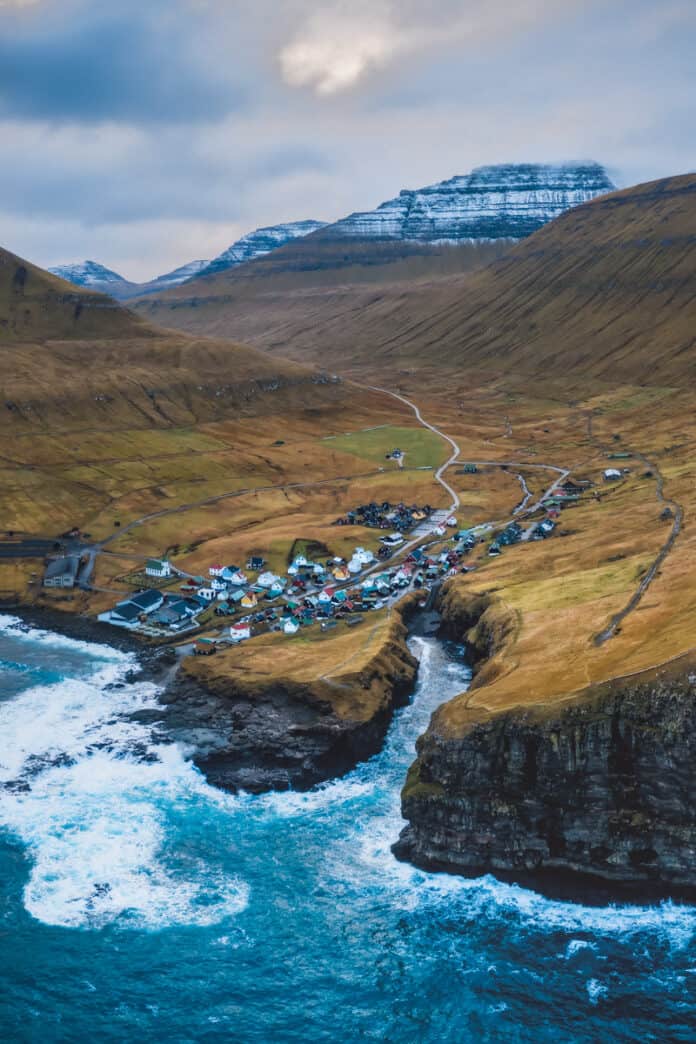
The Faroe Islands are one of the most hidden yet incredible destinations on the planet. I’m still amazed they aren’t talked about more! There are countless unique and surprising things to do there. One of the must-visit spots is Gjógv Village, often called the Village on the Cliff.
This village is famous for its unique geography. When you look at pictures of it, people often don’t believe it is real, but rather the product of some fantasy movie or video game. Trust me when I tell you that it is real, and it looks even better in person.
The village really does sit on a cliff and the land is bisected by a sheered cliff natural harbor.
What makes Gjógv so special?
The pictures alone should explain what is so unique about this village. The picturesque village is alluring enough to want to visit, but once you add in the natural harbor with its epic cliff walls it legitimately feels unreal. The area feels so foreign that I can’t help but imagine the village as a natural hideout for ancient vikings or some sort of wizard!
The permanent local population is only 49 residents.
If you want to stay in the village itself to extend the magic there is one hotel. The Gjaargardur Guesthouse Gjogv can be booked here. I didn’t stay there, but regardless of its quality I would have loved to have been able to extend my stay there!
Once you make it to this unreal site you can’t help but stop and take everything in. You will want to walk around the small village and harbor edge to take it in. I could have stopped at every single building and viewpoint for a new round of pictures.
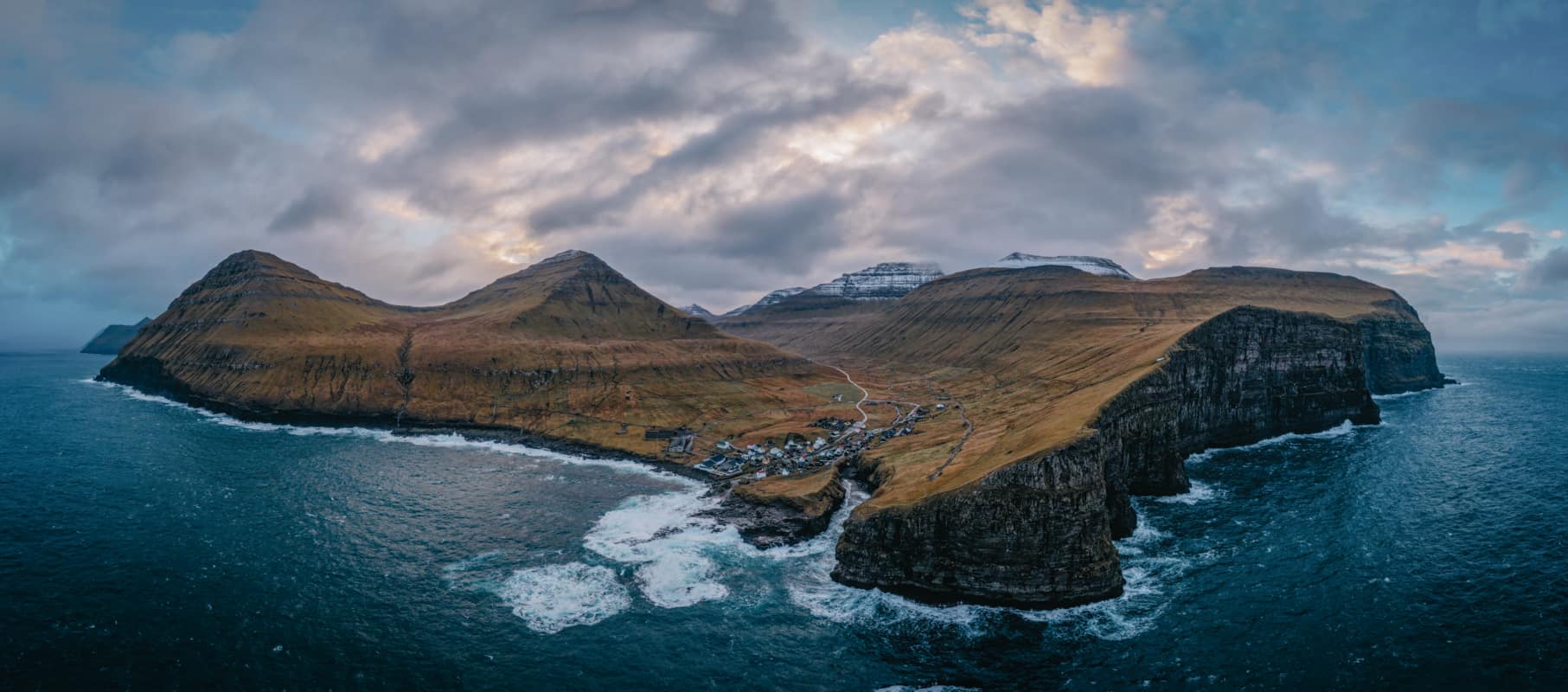
Where is Gjógv located?
First off, if you aren’t sure where the Faroe Islands are just picture a small group of islands about halfway between Iceland and Scotland. Technically the islands belong to the country of Denmark, but for most purposes it is easier to think of the Faroe Islands as their own country.
As the name Faroe Islands would indicate, there are a number of different islands that make up the Faroe Islands. Gjógv is located on one of the bigger main islands named Eysturoy Island. Thankfully all of the main islands are connected to each other via bridges or tunnels. This might seem difficult when you look at a map, but know there are some long tunnels, including one with the only underground roundabout.
The main population center and capital of the Faroe Islands is Tórshavn. Gjogv is only a simple to traverse 40 miles (63 km) from the capital city, but it legitimately feels like you are on another planet. This seaside village feels like it is completely isolated from the outside world. In the digital travel blog age it is almost impossible to find an off the grid spot like this.
How to get there
Thankfully if you make it all the way to the Faroe Islands it isn’t difficult to get the rest of the way. It may look difficult when you look at a map, but thankfully you will be connected to Eysturoy Island via a long underwater tunnel.
There is a toll to go through most of the bigger island to island tunnels. For coming over you will have to pay DKK 100 per ($14 USD).
Thankfully you don’t have to stop and the tolls are added to your final car rental bill. Just be careful that you don’t drive back and forth multiple times unnecessarily as the charges can add up.
Note – There actually is a workaround for avoiding the tunnel fee if needed. There is a bridge that connects Streymoy with Eysturoy Island on the northern end. I took it one of the times on my way back to Tórshavn from Gjógv to save some money.
Find the cheapest Rental Cars in the Faroe Islands.
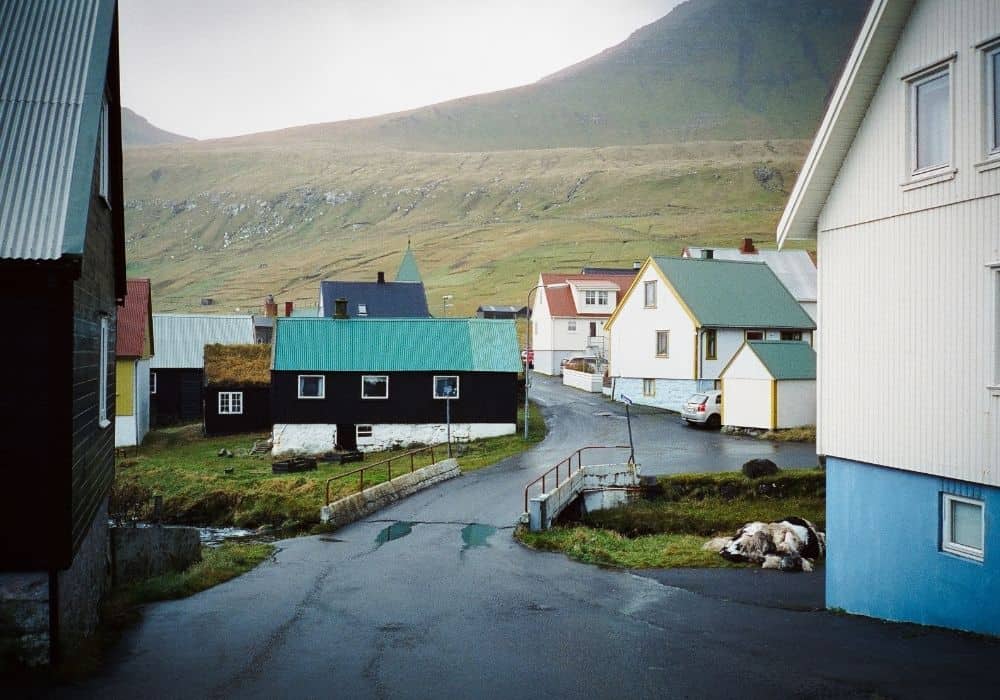
How does a place like this actually exist?
The part that astonishes me is that this place somehow stays relatively hidden. Of all the islands here Eysturoy is my favorite island. Below is exactly what I wrote in my journal while there.
“This is my favorite island so far! It feels much more remote than Streymoy” (the main island I stayed on).
Note: it was raining the day I drove up so I’m sure the waterfalls get much bigger and more spectacular in the rain.
Where to Stay in Gjógv
There is enough to do in the area that it would be awesome to stay a night or two here (even journeying outside of the town). The one hotel in the area again is the Gjaargardur Guesthouse Gjogv. Make sure to book early as there obviously isn’t a lot of inventory.
There is enough to do in the area that it would be awesome to stay a night or two here.
Parking in Gjógv
I was about to park in the town directly next to the gorge as I saw other tourists park there, but then I witnessed another tourist get yelled at by a local villager. I decided not to risk it. Technically you are not allowed to park in town. It would be like someone else parking in your driveway.
There are a couple of parking areas around the outside of the town. Remember it is small so you shouldn’t have problems finding them. There were other visitors that parked along the side of the road in the town in front of people’s houses, but I recommend finding the public spots and walking in to be respectful.
Best Things to do in Gjógv
In general, most of the things you would want to do here are self-explanatory, but in case you are looking for additional specifics I’m including some details below.
Gorge Natural Harbor
You can’t miss the stunning cliff walls framed by the dinky quaint village. The best view of the Harbor can be seen from the Crownprincess Mary’s Bench. The views of the ocean are spectacular on a stormy day.
This Harbor has played a vital role in the community’s history for centuries. Formed by a deep sea gorge cutting into the coastline, this natural harbor provided a safe and sheltered spot for the village’s fishing boats, which were essential to the livelihoods of the residents.
For generations, locals relied on the harbor as a lifeline for fishing, trade, and transportation, as the village is nestled in a remote part of the Faroe Islands. Today, the harbor remains a central feature of Gjógv, preserving its historical importance while offering visitors a glimpse into the village’s maritime heritage and natural beauty.
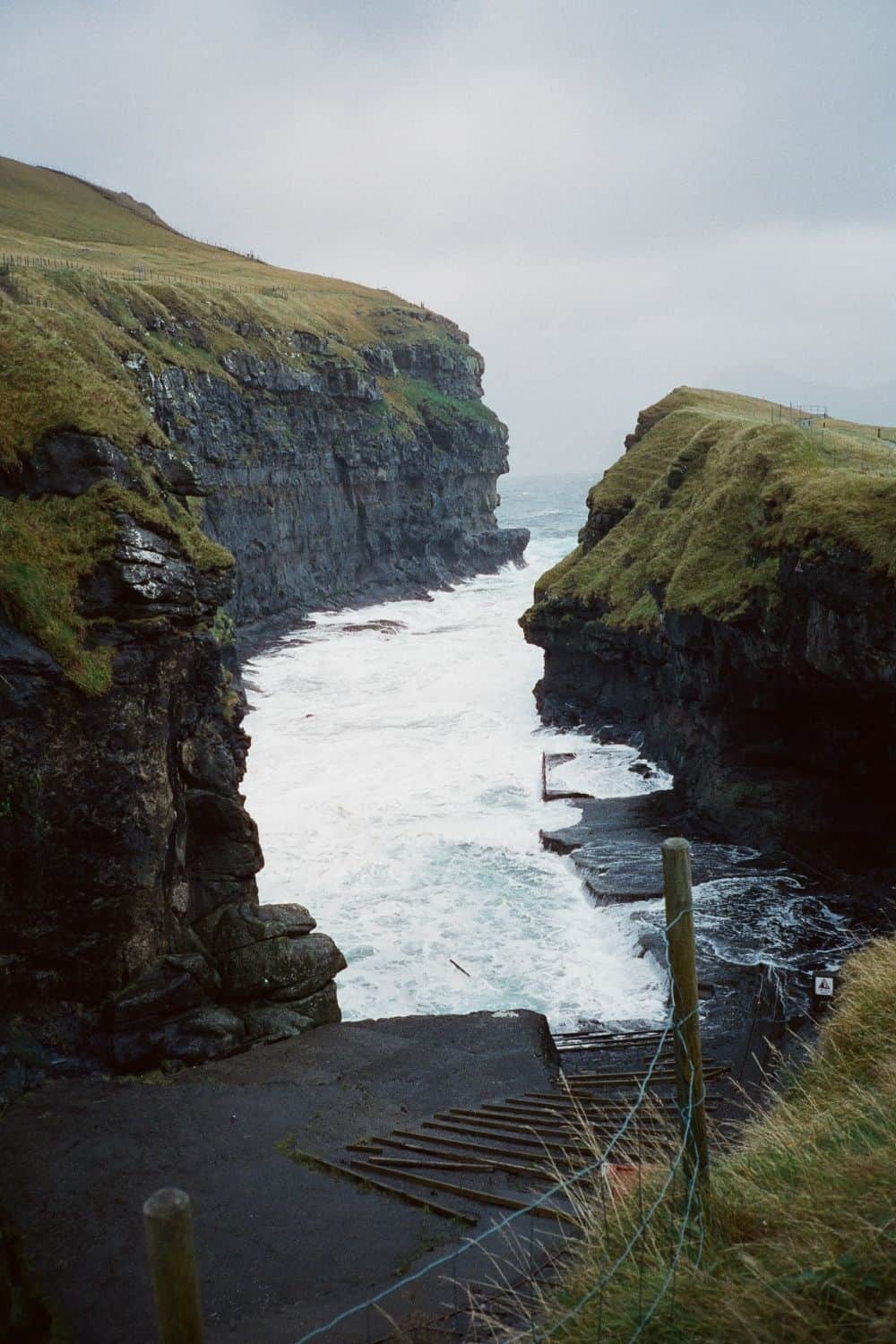
Gjógv Church
The Gjogv Church dates back to 1929. It was the first church in the Faores to offer services in the Faroese language.
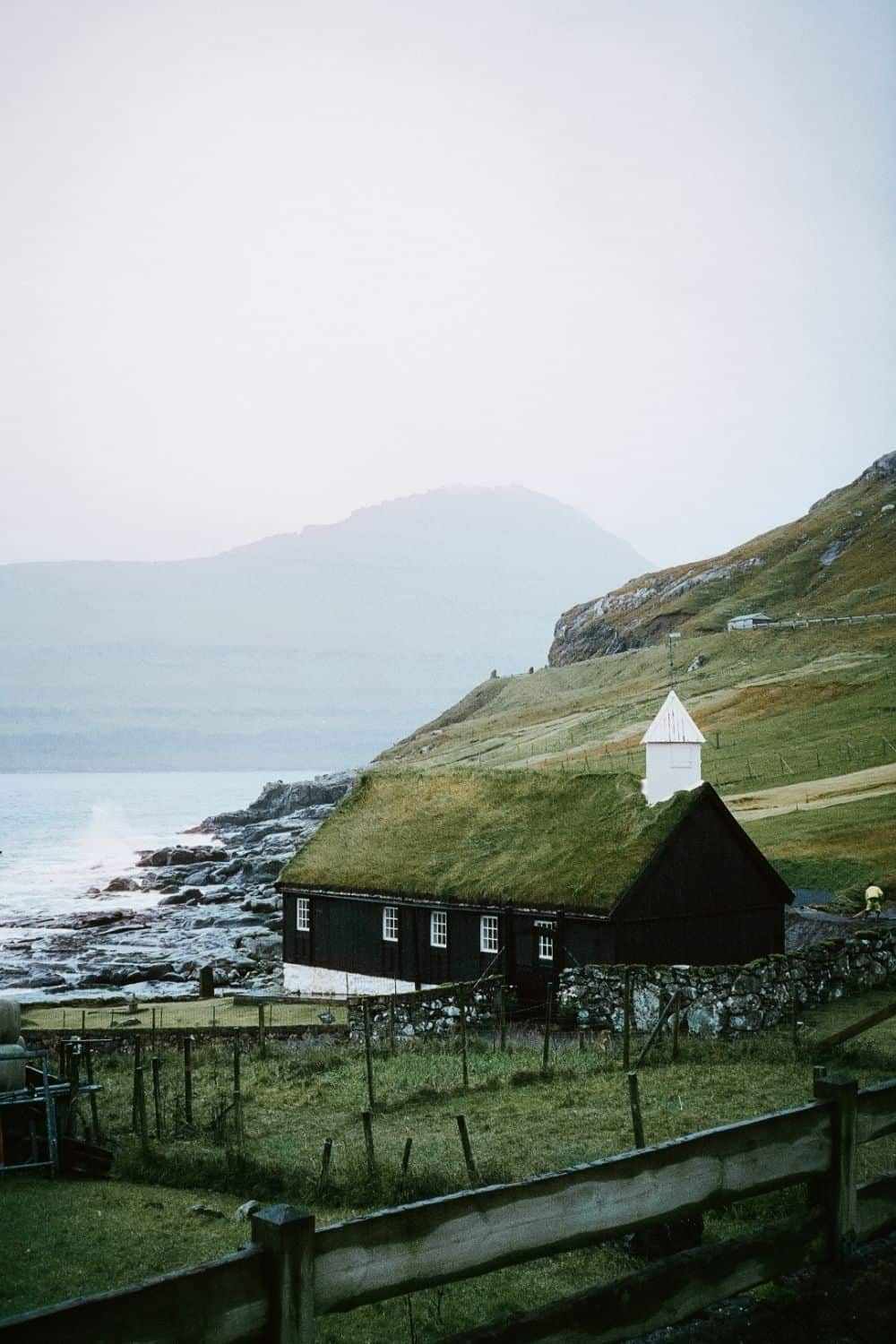
See How the Locals Live
The name Faroe Islands comes from the Old Norse word fær, meaning sheep. There are more sheep than people in these islands and when you walk through the towns of the local villages you will most likely see sheep meat and sheep skin just laying out.
I will never forget the first pile of sheep skin I saw while visiting the village of Gjógv. Just from a 10 minute walk around town you can see how the people live in this tiny, remote village.
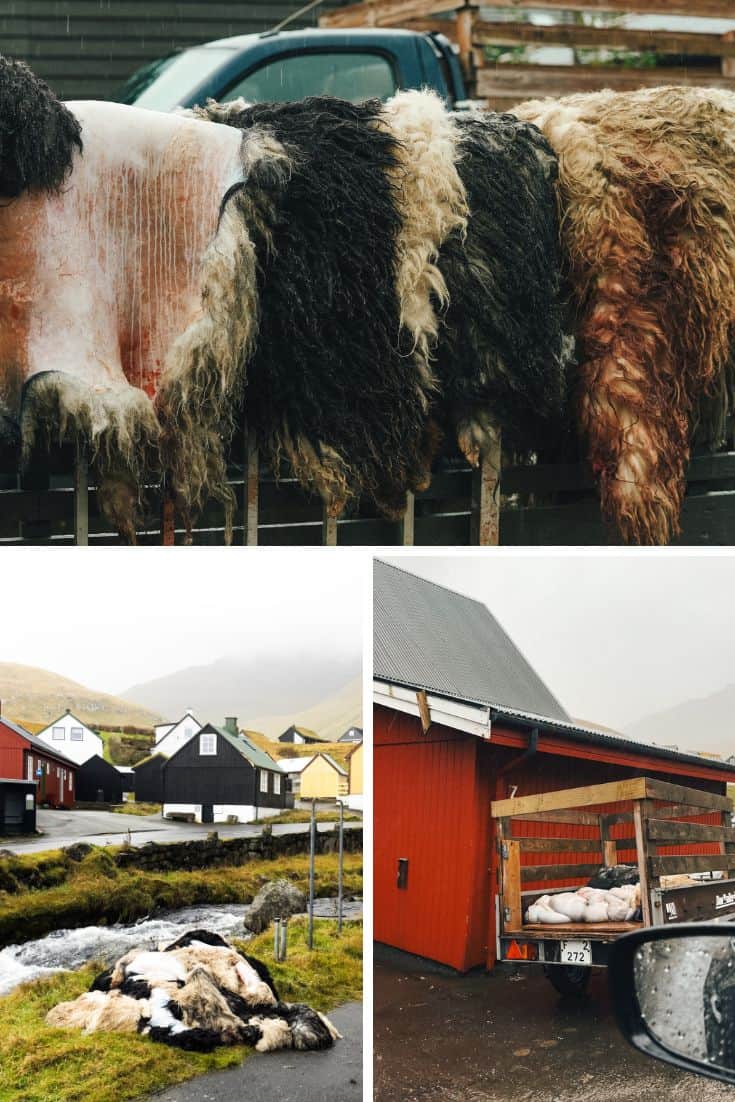
Gjógv Hike (Ambadalur Trail)
There’s a great little hike that offers incredible views of the entire town! Even though it was pouring rain the whole day I was there, the views made it totally worth it. Finding the trailhead can be a bit tricky since it feels like you’re driving through someone’s farm. I didn’t complete the entire hike, but the views from the start were so rewarding that I didn’t feel the need to go any further.
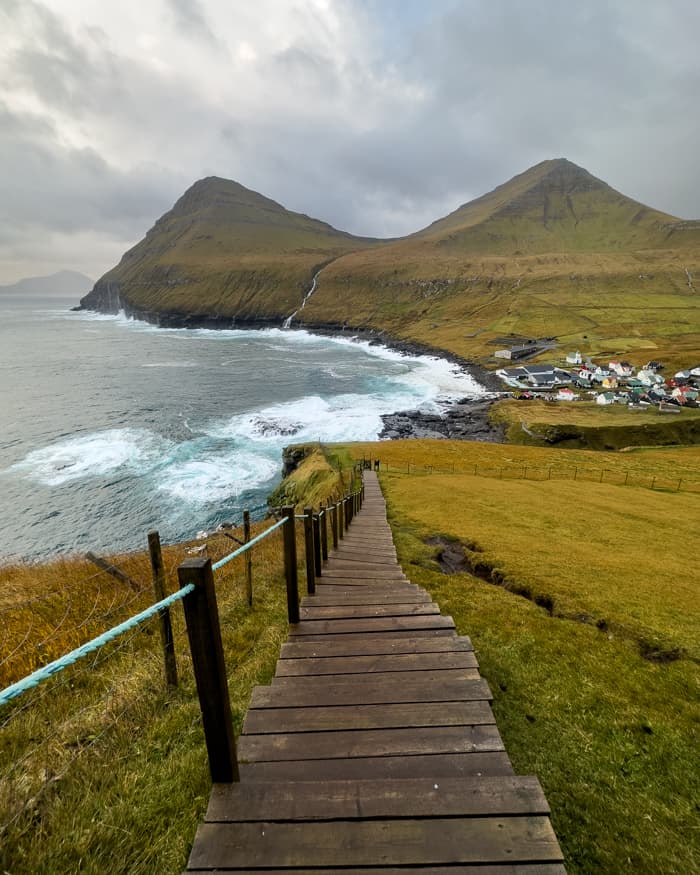
Take photos by the river that runs through the village
The day I was there the river was raging! There is a small bridge where you can cross the river or take photos from. I loved this spot.
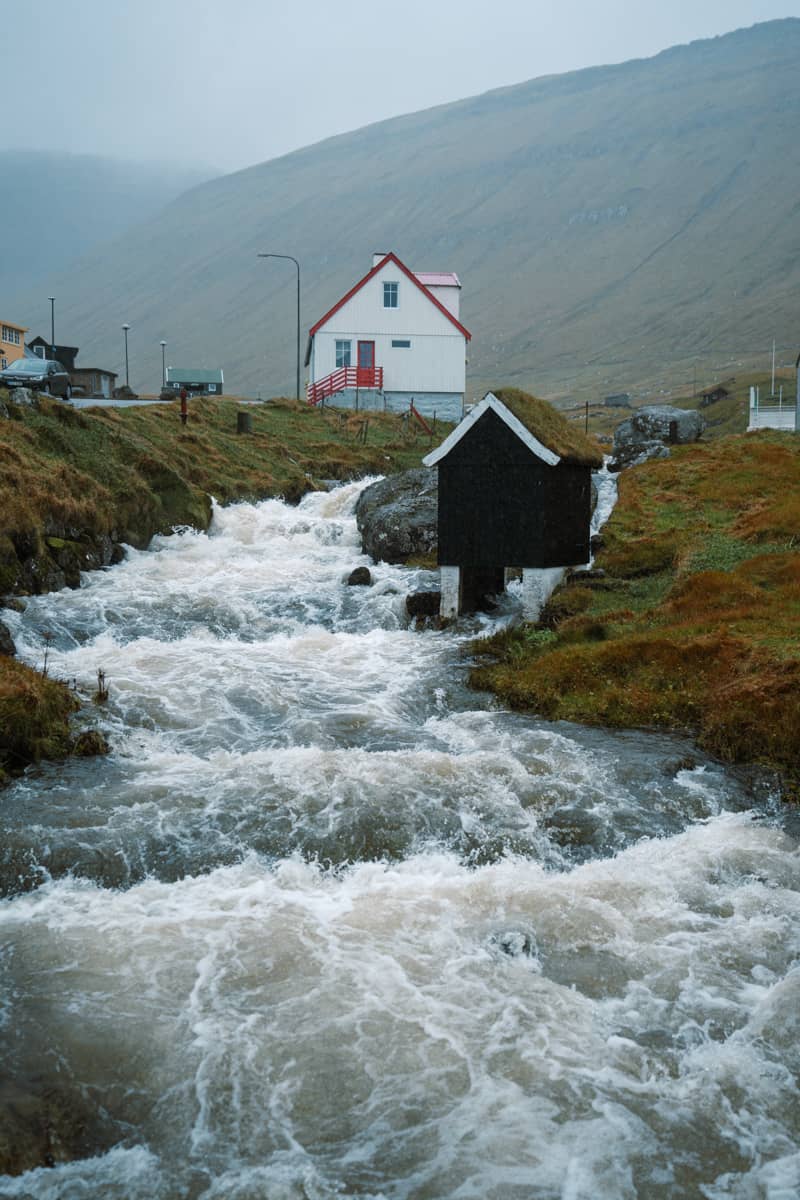
Watch the Rough Waters of the North Atlantic Crash into the cliffs
If you are there during the stormy season (autumn and winter) you are in for a real treat. I sat and watched the waves crash into the mountains for probably an hour. It was just so peaceful. It was truly natural therapy. It was exactly what I needed.
What to Expect on the drive to Gjógv
You don’t have to wait until you get all the way to Gjogv to enjoy incredible views. There really are no words to describe the sight I saw driving on Eysturoy Island on my way to Gjógv. I can try, but it’s is hard to explain how truly unique the landscape is. I’ve traveled all around the world but there isn’t another place that looks like it.
The intensity of the cliffs, mountain gorges, natural plant-life, and churning waters around and through the islands are all so unique. Without seeing it in person you won’t fully get it. On the drive you will see hundreds of different waterfalls. Yes, you read that right hundreds!
Note: it was raining the day I drove up so I’m sure the waterfalls get much bigger and more spectacular in the rain. Thankfully, it rains a lot in the Faroe Islands so my experience is hardly out of the ordinary.
FAQ:
Gjogv Faroe Islands population
Don’t expect to meet tons of locals. There are only 49 residents as of 2023. You likely will see a few other adventurous travelers, but don’t expect it to be overrun with crowds. I will say though that the word slowly starting to get out to international visitors is causing some of the locals to be a bit protective of their town. Make sure you are respectful by not walking on to private property, taking pictures without permission, or flying a drone directly above someone’s head.
Other things to do on Eysturoy Island
Hvíthamar is a vantage point above the village Funningur in the Faroe Islands. It is a short and easy hike that is definitely a must see. The trailhead is only a 5 minute drive from the village of Gjogv. Read more on the Hvíthamar hike here.
Conclusion: Is Gjógv in the Faroe Islands Worth Visiting?
If you can make it happen, then definitely visit Gjogv! I’m convinced that the word is going to get out and the Faroe Islands will soon be much more popular and much more expensive. This hidden gem is literally not like any other destination.